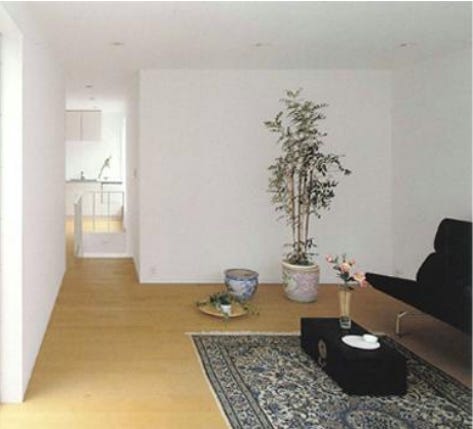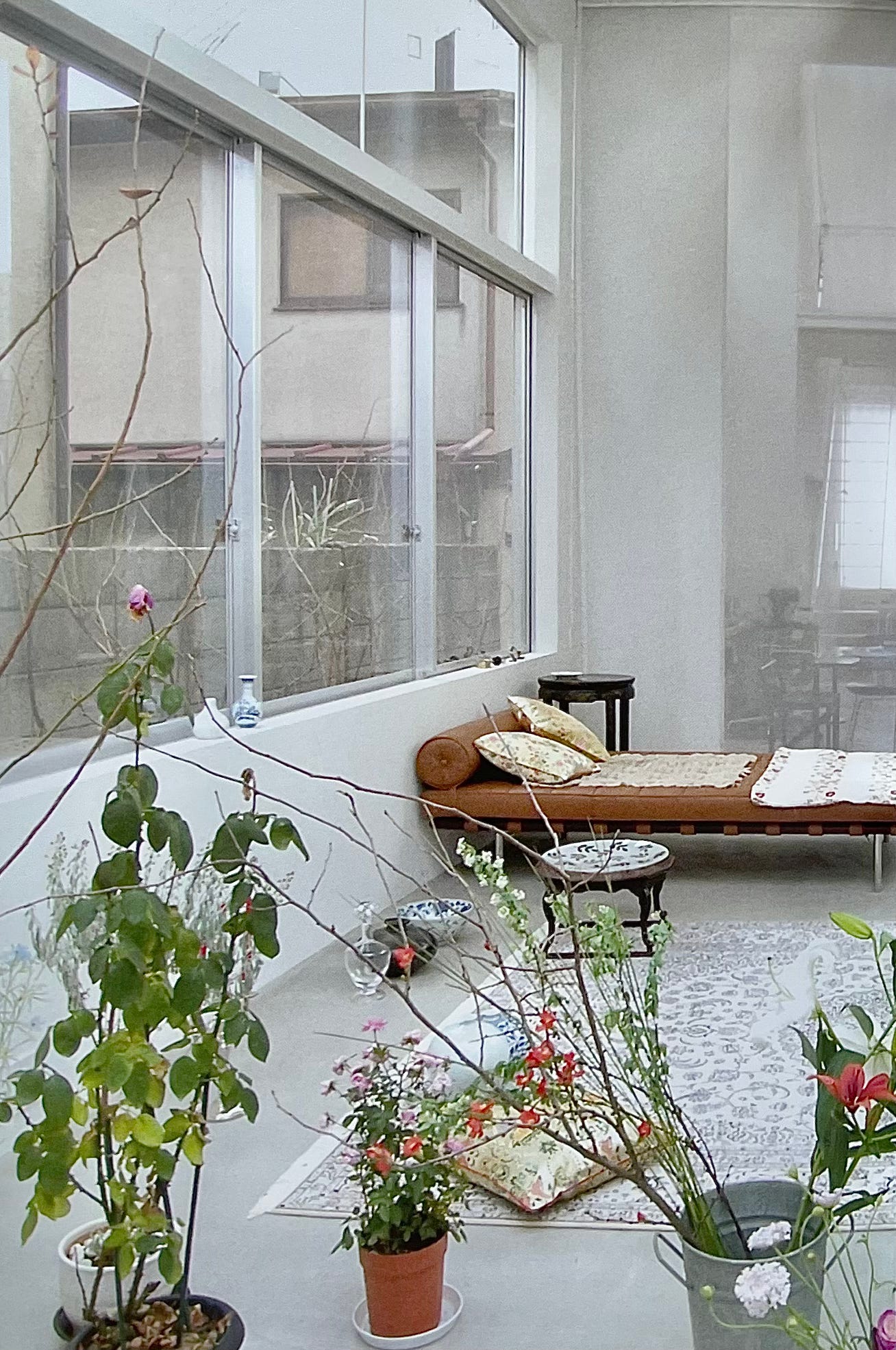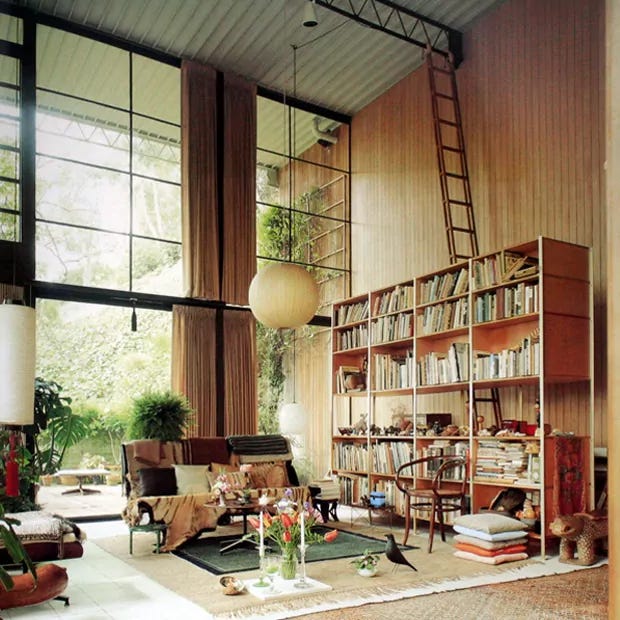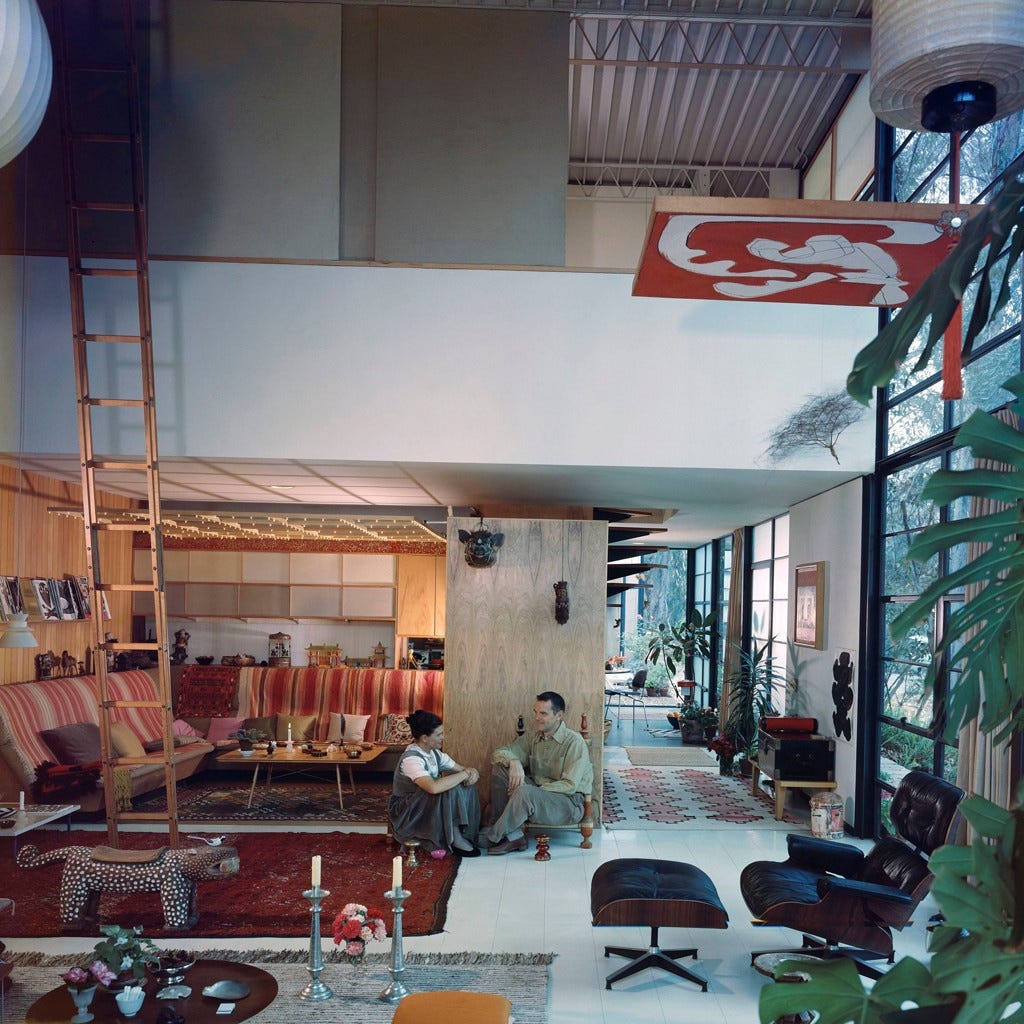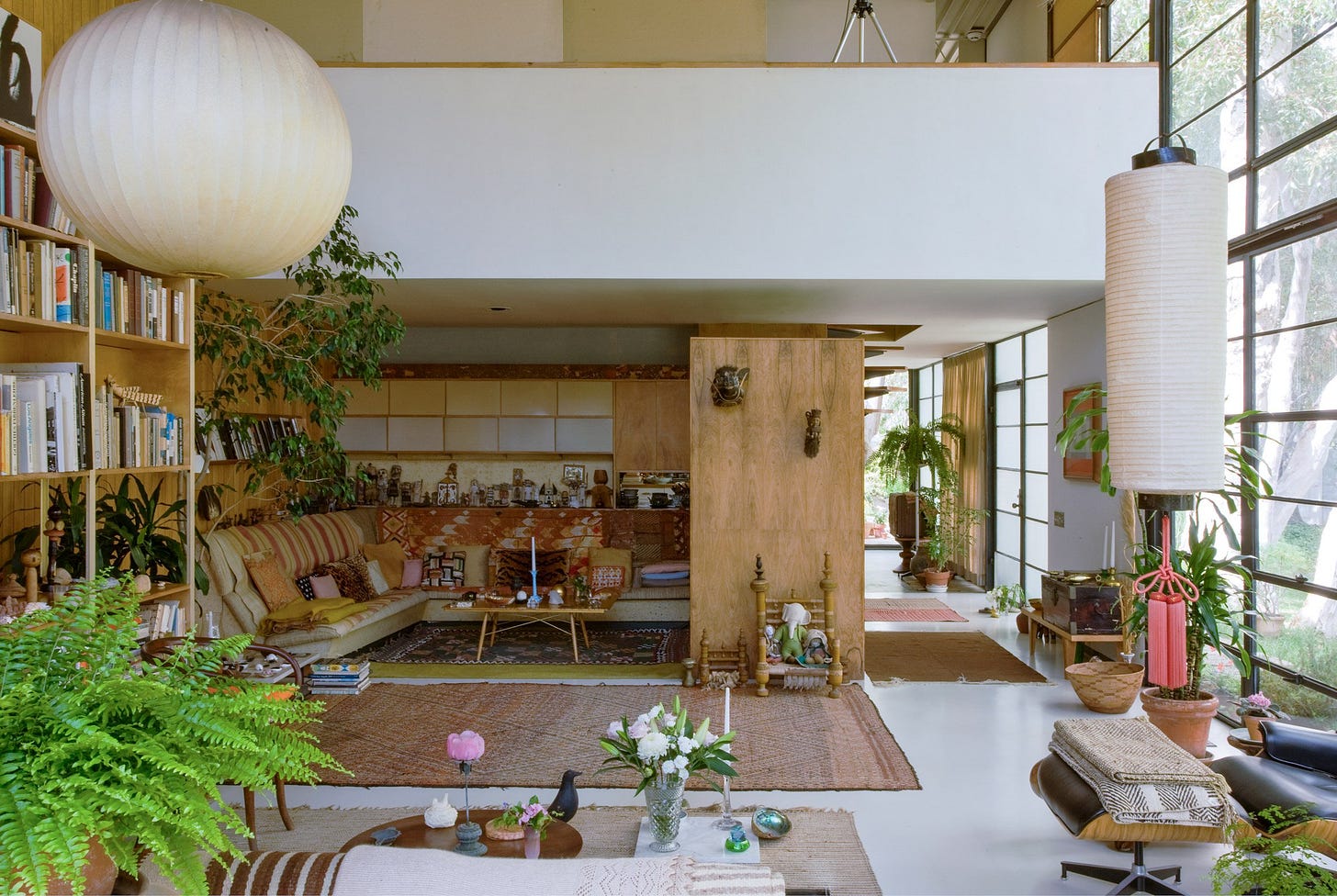An important placeholder
Rugs are kind of a given. Literally so, or as an anxious necessity. A default filler, or an essential feature.
Lilly and Mies used them in a typically-atypical manner and Sejima and the Eames treat them as large seats and tables as much as a floor.
Rugs are gravitational, re-affirming the room around its geometry, or re-orienting themselves otherwise.
For some, the rug is just casual and *noncommittal flooring. Regardless, it is still seriously formal, as its careful placement would suggest, whether for pseudo-pragmatics or mere composition. *But certainly not for all. See images 16-20.
Typologically it is almost always offset from the edges of a room. A rug that sits parallel to the room is normal, a cranked rug is ok, but abutting a wall is almost absurd!
Square, rectangular, circular or anything else, it terriotrialises the room, allocates area and most often gives back surplus to flooring proper. Sometimes a rug even outlines the soft provisions for a room of its own. Corners can point or hold in. Furniture may sit beside or on top, but always with orientation, even when there is little to look at.
Whatever it does it is an important place holder, a bit of decor that has found itself to be a near-quasi-functionalist-essential.

Keep reading with a 7-day free trial
Subscribe to Loosely Looking to keep reading this post and get 7 days of free access to the full post archives.

